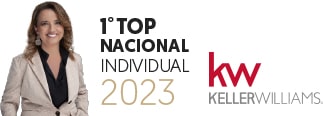According to an opinion study carried out by the environmental association Quercus in partnership with the Sustainable Construction Portal, carried out in 2027:
About 74% of Portuguese consider their homes cold in winter , 25% consider their homes warm in summer and only 1% of Portuguese consider their home thermally comfortable and therefore energy costs to meet heating needs are high. .
One percent of the Portuguese, satisfied with the thermal performance of their home, is a very low figure! Even though 4 years have passed and the construction of new houses has changed this scenario a little, the fact is that Portugal is still far from the best practices of other European countries.
At a time when there is so much talk about climate change, with all that it can bring in terms of temperature variation, it is important to revisit this topic and explore the options available on the market that can contribute to improving the thermal comfort of your home.
Causes for the problem of the unadaptation of Portuguese houses to the Mediterranean climate
The climate in Portugal is characterized by hot, dry and mild summers, with above average temperatures and rainy, wet and cold winters , especially in the interior and highlands. Although Portugal is a small country, because of its southern location, maritime exposure and rugged terrain, there are large climatic differences from region to region.
A century ago, Portugal had a housing stock more adapted to the Mediterranean climate , marked by quite pronounced climate changes, throughout the different seasons. For example:
- In the north of the country, the houses had cattle on the ground floor which transmitted the heat of the animals to the upper floors.
- In the south of the country, houses had walls up to 1 meter thick that protected their interior from very high outside temperatures.
- The use of natural and more sustainable building materials, the existence of attics and the colors used on the facades contributed to superior thermal insulation. Metals, brick and cement came to replace some of these materials, harming this insulation.
In the last century, migratory movements from the interior to the big cities required a quick and cheap response to satisfy the high demand, especially in its surroundings. Brick, cement and iron have become the most common element in the construction of houses , and their thermal insulation properties are not the best.On the other hand, the walls became thinner and central heating or cooling systems were not taken care of as in other countries. We imported cheap construction techniques, but not the indoor air conditioning examples found in other countries.
Today, whoever buys a new house has another level of demand
In this century, things are changing, but the pace of change is slow and not enough to significantly change the scenario described. There are two paths in this evolution: the introduction of air conditioning systems in old houses or the purchase of new houses, where the degree of efficiency and thermal insulation is higher and most of them already have some type of air conditioning, being the air conditioners the most adopted solution.
The energy certification required for the sale of a house, used or new, has brought greater awareness of this problem and forced many builders to review construction techniques. Thermal blocks began to be used instead of simple brick (at least on the facades exposed to the outside), the external covering with a hood became commonplace, and heat pumps were used that were much more efficient from the energy point of view than gas boilers, the use of thermal and photovoltaic panels has become commonplace, the windows and window frames and exterior doors have been improving thermal insulation, the use of underfloor heating is no longer a luxury (especially when coupled with more efficient electrical or hydraulic systems), etc. etc. Today, a new home that has an energy efficiency class lower than A+ or A raises suspicion.
What are the best options for air conditioning a home
In the last decade, air conditioning technology has improved immensely, both in terms of the diversity of solutions, in terms of energy efficiency, and in terms of the cheaper solutions available on the market. To all this was added an extra incentive, financial aid and tax bonuses that the government has been offering.
- Central heating connected to a network of radiators or convectors fed by heated water - A very common solution in modern houses and apartments and the most used in northern European countries. The use of a gas-heated water boiler has been progressively replaced by more efficient and economical electric heat pumps. It is a solution that does not produce noise, does not need air filters and is therefore quite healthy and comfortable. It has the disadvantage of occupying large areas of the wall, although today there are several solutions, vertical radiators, decorative radiators in frame or mirror format.
- Radiators or convectors powered by electrical energy - this is a solution that works with electrical current and can be expensive depending on several factors: use of a bi-hourly electrical contract, existence of photovoltaic panels (with or without electrical storage battery), number of rooms to be heated, respective area, etc.
- Underfloor heating, electric or hydraulic (in this case there is a boiler and heat pump) - It has the advantage of providing an environment with a more homogeneous temperature in all spaces. It has the disadvantage of price and the difficulty of maintenance in case of leaks or damage, as it is installed under floating or ceramic floors. It also requires the use of better quality roofing materials. eg if you use floating floor it will have to have certain quality characteristics that make this type of solution more expensive.
- Air conditioning - one of the most complete and efficient solutions. On the one hand, it serves both to heat the environment and to cool it down. On the other hand, in the last decade the electrical consumption of this type of solution has dropped a lot, making it more accessible. It can be complemented with the negotiation of a two-hour contract with the electricity supply company, if your consumption pattern is adjusted to a certain time. It can be complemented with the use of photovoltaic panels.
- Fireplaces, Salamanders or Stoves - The old fireplace powered by wood has given rise to a myriad of solutions, more efficient, more economical and more sustainable from an environmental point of view. In a modern fireplace or stove, the fuel can be ethanol, gas, 100% recycled materials, etc. The use of a fireplace stove is essential to increase thermal efficiency.
Thermal insulation, an essential issue
The thermal efficiency of any solution you use is directly related to the thermal insulation of your home. You should pay attention to leaks and heat transfers with the outside that may occur through the roof, ceiling, walls, floor, or through windows and blind boxes and doors. These losses contribute to lower thermal efficiency and increase your energy consumption bill.
If you live in a house that is not new, you can look for these vanishing points and try caulking tape solutions, which minimize losses. You can also consult a company specializing in interior and exterior insulation, using thermal insulation panels. The inside of the roofs can also be insulated using thermal insulation panels.


